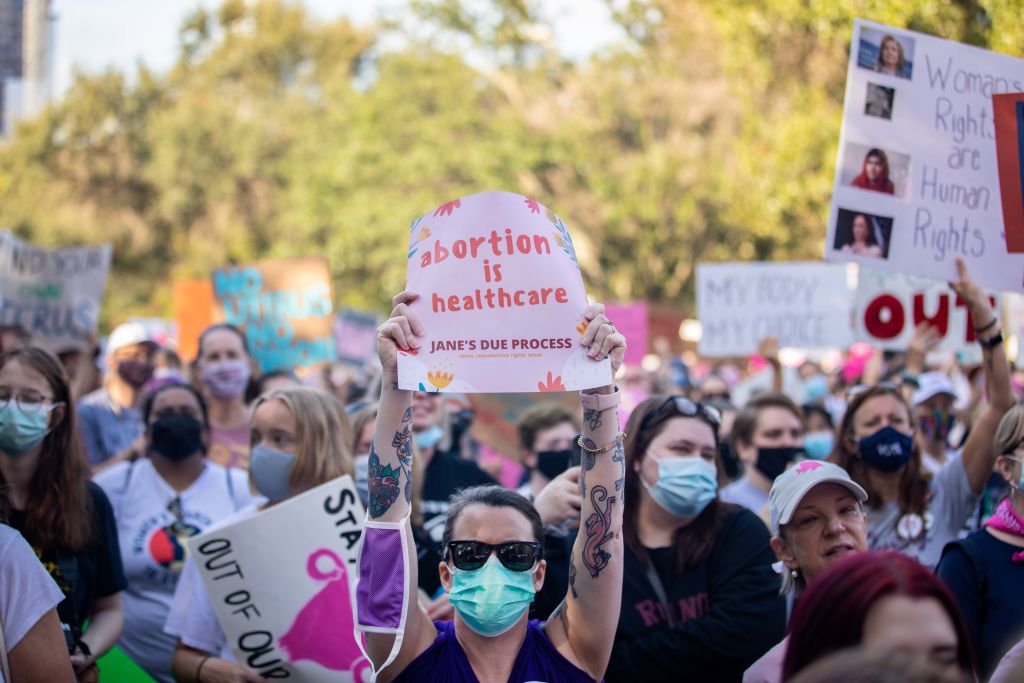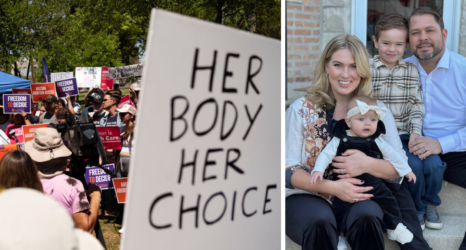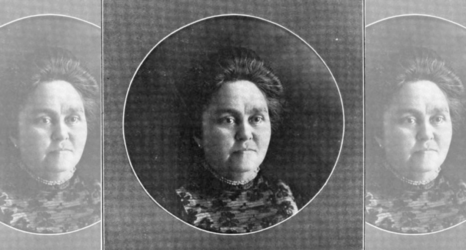We cannot expect to measure the ebb and flow of a truly inclusive democracy without first looking to gender equity. Women’s rights have been the canary in the coal mine all along.

This article was originally published by the Brennan Center.
Last fall, the United States was included for the first time on the annual list of backsliding democracies published by the International Institute for Democracy and Electoral Assistance. Broadly defined as those exhibiting “gradual but significant weakening of checks on government and civil liberties,” backsliding democracies are measured by categories including representative government, impartial administration and participatory engagement. The European think tank reported that the United States shows significant lapses in effective legislative bodies and freedoms of expression and assembly.
Around the same time, a sweeping abortion ban went into effect in Texas and inquiries about its correlation to our backsliding democracy were raised. The New York Times was among several news organizations reporting that such a descent is precisely when “curbs on women’s rights tend to accelerate.”
However, there has been notably little discourse about the converse of this proposition: that America’s longstanding and abysmal record on myriad gender equity markers has been the true harbinger for our downgraded status. According to a United Nations report, the trajectory of “de-democratization” is rarely analyzed initially through the distinct lens of gender equity and there are insufficient efforts to systematically examine the current implications.
To be sure, the United States is, in fact, experiencing an increase in women’s representation. Twenty-seven percent of members of Congress are now women, up 50 percent from a decade ago. On the Supreme Court, women will likely soon account for four out of nine justices, two of whom are women of color. Vice President Kamala Harris is the first woman, and person of color, to serve in the role. At the state level, more than 30 percent of elected executives are women, along with 31 percent of legislators.
But these raw numbers alone are an insufficient measure. Women’s leadership in the United States still lags relative to much of the world. And the figures are a far cry from robust and meaningful representation, especially for women of color. Today there are zero Black women in the Senate, and a Black woman has never served as state governor.
America’s longstanding and abysmal record on myriad gender equity markers has been the true harbinger for our downgraded democracy status.
The United States also performs pitifully on essential ingredients for women’s participation in the body politic. For example, while maternal mortality has decreased globally—dropping by 43 percent over the last three decades—rates in the United States remain on the rise. We currently rank 46th in the world. The crisis is particularly acute for Black women, who are three times more likely to die during pregnancy and childbirth in America than white women. Globally, paid maternity leave averages 29 weeks. We are one of only six countries, and the only wealthy nation, without any form of national paid leave.
Further, the United States is an outlier on constitutional equality, even as the Equal Rights Amendment now navigates final ratification after a century-long fight. Eighty-five percent of United Nations member states have explicit constitutional provisions that prohibit discrimination on the basis of sex and/or gender. Of those with constitutions adopted since 2000, all do so; France is among those that have amended their older, established constitutions to acknowledge equality.
For the past two decades, as much of the world has expanded access to abortion, the U.S. is one of three countries—joined by Nicaragua and Poland—actively rolling back rights.
Across domestic agencies we have too few guardrails against abusive institutional practices and too many reports of barbaric treatment of women and girls, including of those who are incarcerated or detained by the government being sterilized without their consent, shackled during childbirth or denied menstrual products.
And the list goes on. These are not merely the byproducts of a democracy on the decline. Rather, they also drive a downward spiral—and can inevitably lead to deeper inequality and wider gaps in participation, a truly vicious cycle.
As indicated above, America’s standing in the global reproductive landscape offers a real-time glimpse at what to expect from our backslide. For the past two decades, as much of the world has expanded access to abortion, the United States is one of three countries—joined by Nicaragua and Poland—actively rolling back rights.
Though most Americans support legal abortion, we’ve now seen overtly unconstitutional laws glide through state legislatures and be met with staggering indifference by the courts. Later this spring, the Supreme Court will likely uphold the 15-week ban in question in Dobbs vs. Jackson Women’s Health Organization, thereby gutting the precedent of Roe v. Wade. All of which has spurred even more extreme proposals—like a bill in Missouri that would allow citizens to sue anyone who attempts to help a person seek an abortion out of state.
As the Times reporter above reflects:
“For all the complexities around the ebb and flow of abortion rights, a simple formula holds surprisingly widely. Majoritarianism and the rights of women, the only universal majority, are inextricably linked. Where one rises or falls, so does the other.”
Except we cannot expect to measure the ebb and flow of a truly inclusive democracy without first looking to gender equity. It is not a chicken and egg equation—but rather where we must start and end the inquiry. Women’s rights have been the canary in the coal mine all along.
Ms. and the Brennan Center (BC) for Justice, a nonpartisan law and policy institute at the NYU School of Law, co-published 11 essays as part of a groundbreaking series, “Abortion Is Essential to Democracy.” In the series, BC experts argue that voting rights and democracy are connected to abortion access. The essays all directly comment on the decision for the Supreme Court to hear oral arguments in Dobbs v. Jackson. Read all 11 essays here.
Up next:





